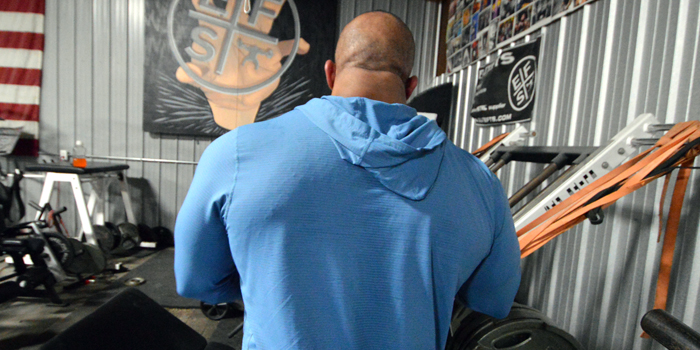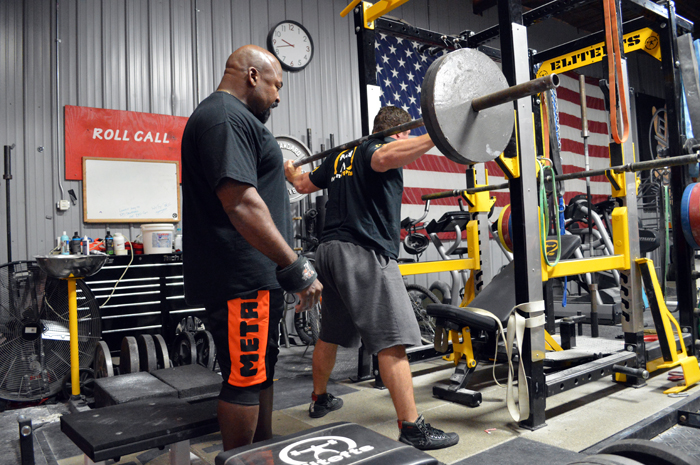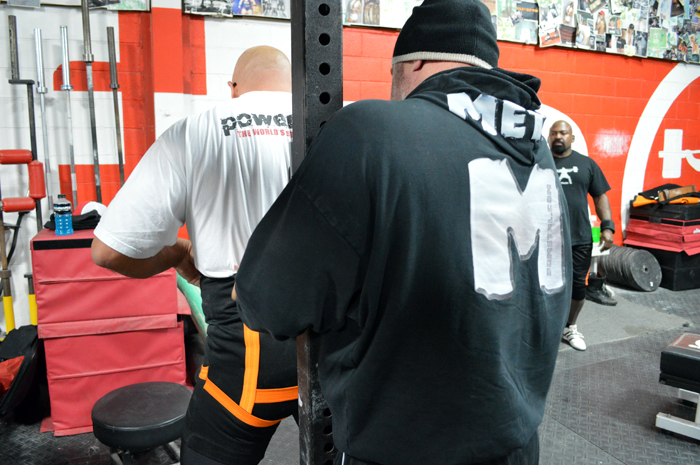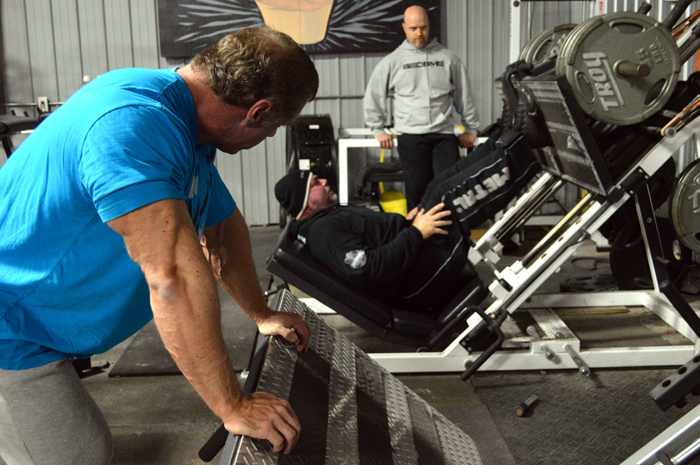
Program hopping occurs all of the time. We are always looking for the greenest grass that exists, and have this idea that the best program there is, is the one you are not on. People jump from linear periodization to Cube to Westside to functional training to Smolov to HIT to 5/3/1 to APRE to Velocity Based Training (Okay, shameless plug, but I couldn’t help myself) in search of the program that makes their squat go up 100 pounds. Now, they keep jumping from program to program and trying to find the perfect program, and they forget one thing: all training programs are flawed. They are flawed by about 25 percent for any given person at any given time. Sometimes you may make a jump from one program to the other, and it just happens to be falling in to the 25 percent that you are deficient on at that time.
This article is going back to a conversation that the wise old Yoda known as Dave Tate had with me back in about 2000 (I can remember the year only because I was excited to be able to legally drink a beer at dinner with Dave and Jim Wendler). We had a conversation about this very topic back then (nearly 15 years ago, I’m dating myself), so this is nothing new.
People like to go with analogies on training programs, and I’d like to throw one out that I have tweaked a bit that I once heard Alwyn Cosgrove say in an interview or article way back in the day. Everyone talks about apples and oranges when comparing programs. The problem here is that they are not apples and oranges; all training programs have the same goal: to improve performance. So, what we are talking about is really a preference of apples. You like Gala, she likes Red Delicious, he likes Golden Delicioius, I absolutely love Honey Crisp. We all like apples, just small variations in it. Now, if you boil down all training programs, they contain four components: Volume-Intensity Relationship, Frequency of Training, Selection of Exercises, and Trait Selection. All of the programs are based in these four basic areas.
Let’s briefly discuss the four areas.
Volume-Intensity
The volume-intensity relationship is simply what sorts of volumes people are doing at a given intensity. Some prefer to load mostly in one zone as compared to another, i.e. some like the 75-85 percent, some like the 95 percent. Some prefer to stay in small volumes at maximal loads, some like to go at high volumes at maximal loads. Some like single sets to failure, some like multiple sets.

Frequency
Frequency is next. How often are the training sessions? They may split things up by body part, or category (push-pull, upper-lower), or stay with total body training. For instance, total body three days a week like in the tier system, versus four days per week, going off of an upper-lower split. With the tier, you actually get one more training session in per week per body part as it’s total body three days, as opposed to hitting upper twice and lower twice even though the four day split has more training days.
Selection of Exercises
Selection of exercises is pretty self explanatory. Olympic lifting, powerlifting, functional training, dinosaur training — all of these are going to vary quite a bit in their exercise selection.
Trait Selection
Trait selection: what is being trained here and what are the goals of training? Is it power, strength, hypertrophy? While this will also be reflected in the volume-intensity category, the intent must be explicitly stated.
Now, back to the train of thought. Here is something to realize: all soundly designed programs work. Several years ago I wrote an article about the perfect program for coaches and athletes alike. For a program to truly work, you have to know the inner workings of the program and believe in it. Now, here is where the 25% rule comes in. Programs will stop working after a while. The key is to break down the four categories and find out why you are no longer seeing results. The key is to not jump the program entirely; the key is to sit back and see what the 25% is.
Is it the volume-intensity relationship? Are you getting sufficient volume and intensity or have you been getting too much? Will you benefit by throwing in a deload week with lower volume and intensity? Many trainees used to go over to the Mentzer Method of one set to failure and see these amazing gains. They got super strong, put on muscle, and started to feel good. That means the Mentzer method of High Intenstity one set to failure training was the holy grail, right? Wrong. Most of these trainees at this time were doing a derivation of German Volume Training, doing too many sets, too many reps, at too high of an intensity and had overtrained. Going to one set allowed them to recover. It was akin to functional over-reaching followed by a reduction in total training load to allow for supercompensation. If the trainees would have had programmed in periods of reduced total training loads, they wouldn’t have burned out and would have been able to continue to make fantastic gains. Their volume-intensity relationship was off.
Was it the frequency of training? Some trainees follow a linear periodization and do one training day a week of each lift. One day on bench press, one day on squat, and one day on dead lift. For a while, they see great gains in training, but then progress stalls. They have a great volume-intensity relationship on their training on each day, and have a great exercise selection but they stall out because they are not getting enough frequency; they fall out of the wave for adaptations. Training is like medicine: if I take an allergy pill one day, I have fewer allergy symptoms that day. If I take that pill that one time, it doesn’t work for me three days later. I continually have to take my medicine every day to see the protective effects from my severe allergies. I take it one day, it doesn’t fix it forever. If the training does not have sufficient frequency, I won’t see the gains. Conversely, if it is too often, I won’t see gains.
Realize that this works both ways. Some people can handle super frequent training sessions and some can’t. You have to find what works for you. The Bulgarian system by Ivan Abadjiev built many Olympic Champions, and it did so by attrition. If you could withstand the training frequency of the program and adapt to it, you would become an Olympic champion. If you could not, you would get hurt. Those who responded supremely to high frequency training should stick with it, those who don’t should not. It doesn’t mean that there is something right or wrong with a person based off of what training frequency they do best on, there just is what there is.
Was it the exercise selection? Were the appropriate exercises selected for that person to strengthen their weaknesses? I remember hearing someone once say, “I did that program that day and it made my ankle feel better. No amount of glute ham raises I ever did helped my ankle.” Well, obviously the exercises were improperly selected for that persons strengths and weaknesses. They may have already had a strong posterior chain, but lacked dorsiflexion. Instead of doing ten sets of GHR’s, if they would have done three sets of GHR’s and spent the rest of the time doing things to get the dorsiflexion, they would have benefited greatly. Likewise, some programs see great increases in patellar tendonitis. They do tons of squatting and quad work to make the squat or clean go up, but they neglect the fact that the hamstrings (semitendonosus, semimembranosus and biceps femoris) work as knee flexors and hip extensors. Many worked on the knee flexion but neglected the hip extensions or vice versa and the fact that the hamstrings also work to prevent the tibia from shearing forward (which is one of the reasons that posterior chain work prevents ACL tears), and thus the tibia starts shearing forward during the squats, putting pressure on the patellar tendon and thus develops inflammation in the tendon (patellar tendonitis) as a function of improper exercise selection.
The last is trait selection. What was the desired trait and what was the implemented trait? I often speak of our battle with Olympic lifts at Missouri and how we went to velocity to dictate load. If you want more info on that check out the elitefts Sports Performance Podcast I did with Mark Watts last year. We had the wrong trait being trained for the exercise and thus weren’t getting the desired adaptation. We implemented the demand of accelerative strength and expected the adaptation of explosive strength. This is an area that often training goes awry. If the athlete needs to focus on hip mobility, but it’s not included in the training, that’s an issue. If the athlete needs to focus on explosive strength, but absolute strength is the only trait developed, that’s an issue. If the athlete needs to focus on absolute strength but only exercises that use high rates of force development are present, that’s an issue. Training isn’t magic. You have to know what the desired trait to be developed is and act like a surgeon and implement training to do that.

As an aside here, the hip mobility, doesn’t have to be a whole different workout. Just implement hip mobility into the workout in the pre and post workout or in between sessions. Especially for soft tissue quality, the things we do in between training sessions matters. Let’s say I keep punching myself in the arm. I’m going to get a bruise, right? But I keep hitting myself in the arm. I go to a doctor and he holds my hand and doesn’t let me punch myself in the arm for the hour I’m with him. The pain goes away, but the other 167 hours I keep hitting myself in the arm. Guess what? Your arm is going to keep hurting! It's not just what you do in the gym, but your posture and what you do the rest of the week also matters.
Realize that there are these four main categories of training. Find the training program that you like, and stick with it. When you hit a sticking point, look at the four areas and see which one it is that you need to change. Change just that small tweak instead of program hopping. You will consistently achieve gains and eliminate plateaus. Become more in-tune with the principals of training, rather than the philosophy of some trainers, and you’ll get further. What I mean is this: understand what the training is, what it does, and why it does it. Maybe this program called for exercises more for knee flexion and I needed a balance of flexion and hip extension. Maybe this program called for a lot of anterior delt work, but it’s my posterior delt, rhomboids and teres that are needing the improvement. I save time by finding this out rather than just jumping programs. By saving time, I increase my gains over time.
In closing, try to learn the what, why, where, and how of training. This will help you understand why training works and allow you to see gains over time. It’s not magic. You will become stronger of mind and end up being much stronger of body as a result.










3 Comments